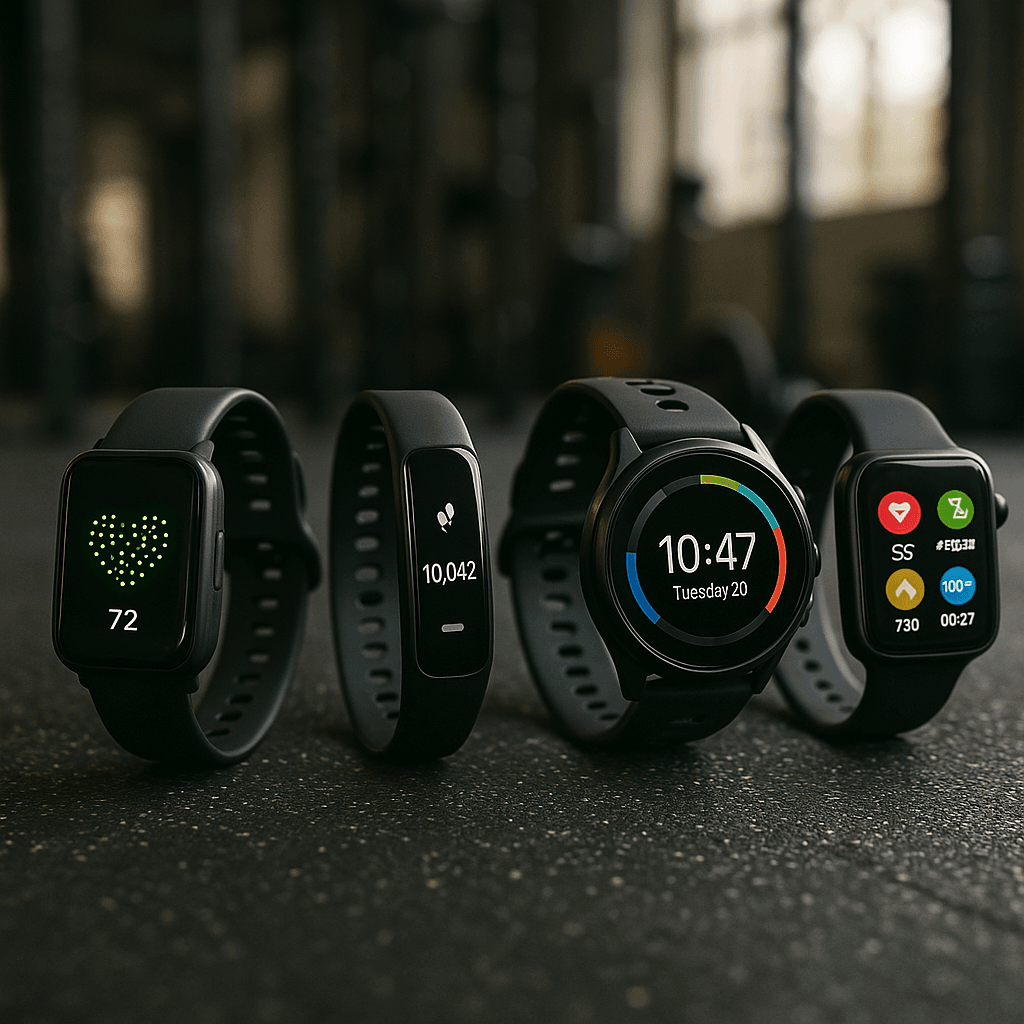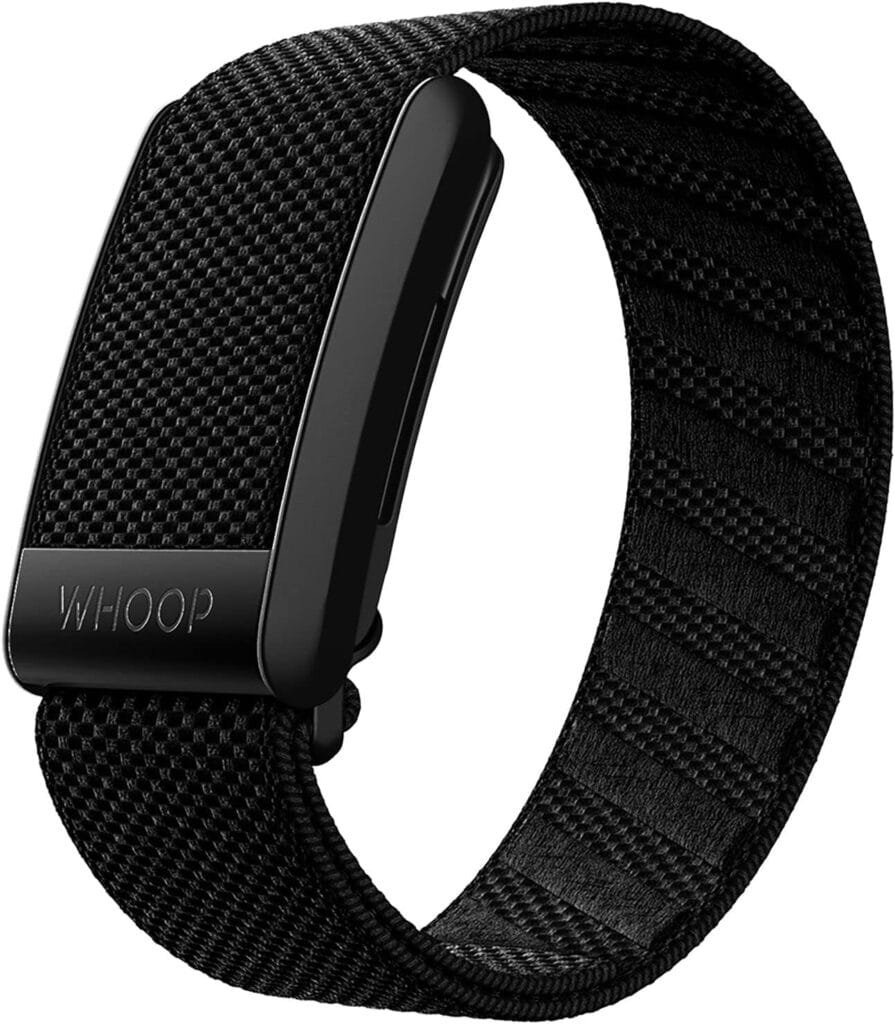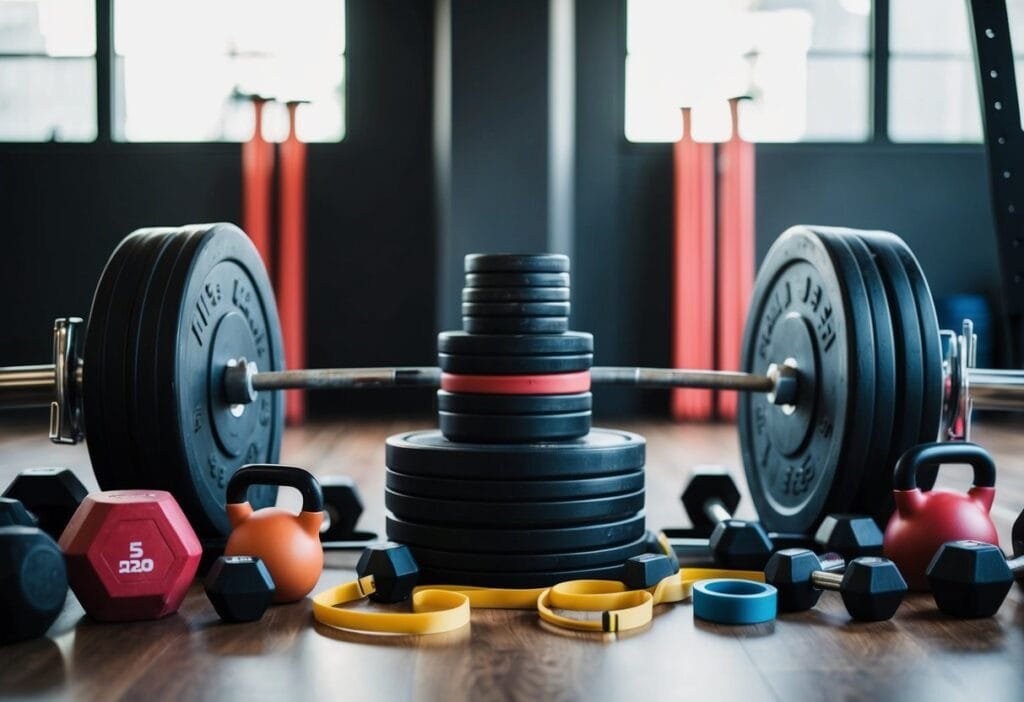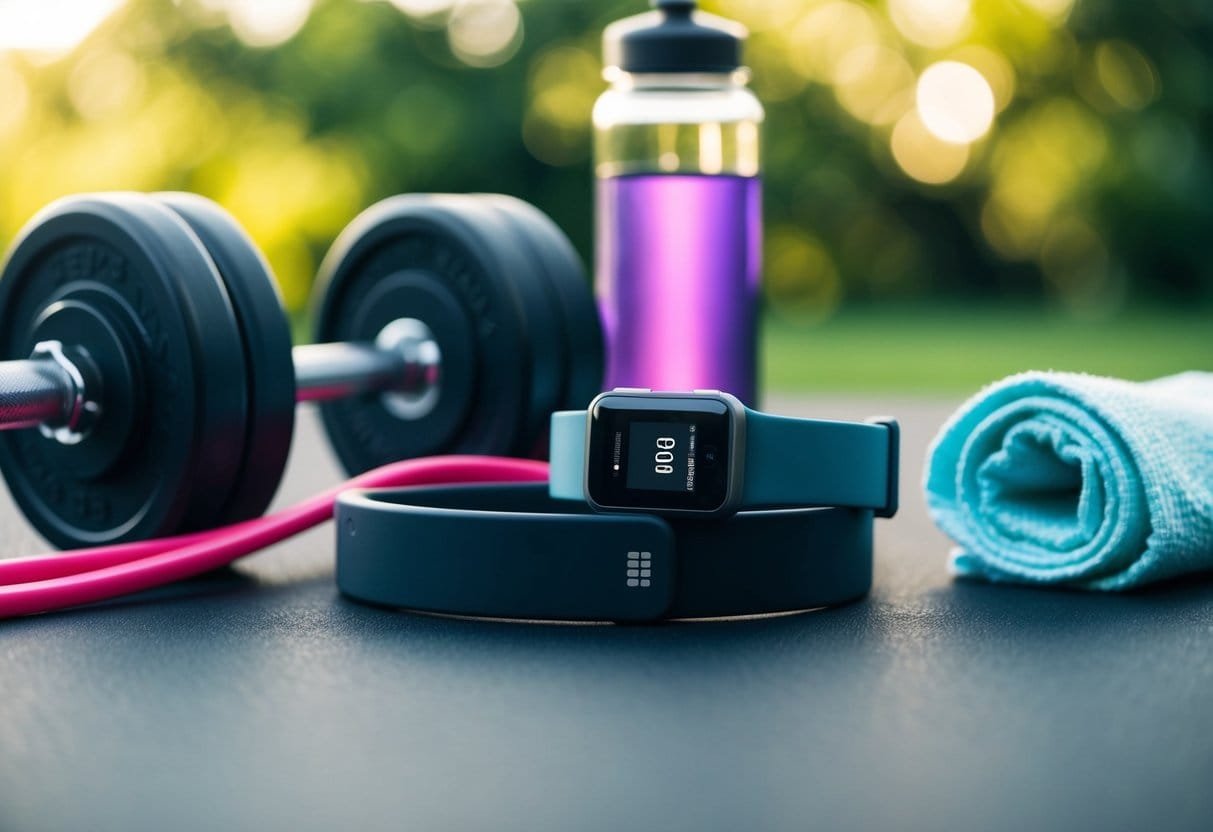Finding the right fitness tracker for strength training can be challenging with so many options available.
Today’s market offers devices specifically designed to monitor weightlifting, functional exercises, and gym workouts beyond just counting steps or tracking runs.
The Garmin Venu series and Whoop 4.0 consistently rank among the best fitness trackers for strength training, with features that accurately monitor exercises, recovery metrics, and sleep quality.
Many standard fitness trackers fall short when it comes to strength training, but specialized models now include rep counting, exercise recognition, and muscle recovery analytics.
These advanced trackers help users optimize their workouts by providing detailed insights into their lifting performance, rest periods, and overall training load. They also offer extended battery life, which is crucial for serious gym-goers who don’t want to charge their device daily.
Key Takeaways
- Specialized fitness trackers like the Garmin Venu and Whoop 4.0 offer features designed specifically for weightlifting and functional exercises.
- Look for devices that monitor recovery metrics, sleep quality, and muscle activation alongside basic exercise tracking.
- The best strength training trackers provide extended battery life and accurate data analysis to help optimize workout performance.
Identifying Your Strength Training Goals with Fitness Trackers

Modern fitness trackers offer powerful tools for strength training enthusiasts. They help you define clear goals and track specific metrics that show your progress over time.
Setting and Achieving Fitness Goals
Fitness trackers can transform vague intentions into measurable objectives.
Start by identifying what you want to achieve with strength training – building muscle mass, increasing power, or improving endurance.
Most quality trackers allow you to set specific goals like completing a certain number of workouts weekly or lifting particular weights. Devices from brands like Fitbit and Garmin let you customize goals based on your current fitness level.
The best approach is to use SMART goals: Specific, Measurable, Achievable, Relevant, and Time-bound. For example, “increase bench press by 15 pounds in 8 weeks” provides a clear target.
Some trackers also provide reminders and celebrations when you hit milestones, which research shows can boost motivation and consistency.
Monitoring Progress: Strength Training Metrics
Tracking the right metrics is crucial for strength training success. Quality fitness trackers monitor several key data points beyond simple rep counting.
Important metrics to track include:
- Total weight lifted per session
- One-rep maximum improvements
- Rest periods between sets
- Workout volume (sets × reps × weight)
- Recovery metrics (heart rate variability, sleep quality)
Premium trackers like Whoop stand out for weightlifting stats according to search results, turning your data into actionable metrics with specific goals.
Look for devices that automatically recognize different exercises. This feature saves time and ensures accurate tracking without manual input during workouts.
Many advanced trackers also measure heart rate during strength training, helping you maintain optimal intensity zones for your specific goals.
Key Features of Fitness Trackers for Strength Training

When selecting a fitness tracker for strength training, certain features make specific models stand out from the rest. These devices combine specialized sensors, durable construction, and comfortable designs to enhance your lifting experience.
Accuracy and Sensor Technology
Accurate tracking is essential for measuring strength training progress effectively. Modern fitness trackers use advanced accelerometers and gyroscopes to count reps and identify specific exercises automatically.
High-quality trackers can distinguish between different movement patterns, allowing them to recognize whether you’re doing bicep curls, bench presses, or squats. This automatic exercise detection saves time and reduces the need for manual logging.
Heart rate monitoring plays a crucial role during strength workouts.
Look for devices with optical heart rate sensors that remain accurate during static contractions. The best models sample heart rate multiple times per second, providing real-time feedback on training intensity and recovery between sets.
Some advanced trackers now include muscle oxygen sensors that measure how hard your muscles are working, helping prevent overtraining and optimize rest periods.
Durability and Water Resistance
Strength training puts significant stress on wearable devices. Quality fitness trackers feature reinforced cases and scratch-resistant screens that withstand impacts with weights and equipment.
Water resistance is important even if you’re not swimming. A good strength training tracker should handle sweat, rain, and post-workout showers without issues. Look for devices with at least 5 ATM water resistance ratings, which means they can withstand pressure equivalent to 50 meters underwater.
The band material matters too. Silicone or nylon bands typically offer the best combination of durability and comfort for strength workouts. Many manufacturers use specialized treatments to prevent odor buildup from repeated exposure to sweat.
Battery life becomes critical during extended training sessions. The best strength training trackers offer at least 5-7 days of battery life with regular use.
Comfort During Workouts
A fitness tracker shouldn’t distract from your workout.
- Lightweight designs with slim profiles avoid interference during exercises like pushups or planks where wrists bear weight.
- Band adjustability ensures the tracker stays in place during dynamic movements.
- Many strength-focused trackers offer quick-release mechanisms for easy cleaning and band replacement when needed.
- Screen visibility matters in varying gym lighting conditions. Look for displays with automatic brightness adjustment and high contrast that remain readable when your hands are moving quickly.
- Position flexibility offers another advantage for serious lifters. Some trackers can be worn on biceps or attached to clothing instead of wrists, providing more accurate readings during certain exercises while staying out of the way.
Top Fitness Trackers for Specific Strength Training Activities

Different strength training activities require specific tracking features to maximize your workout results. The right fitness tracker can provide valuable insights whether you’re lifting weights, using cardio machines, or training outdoors.
Dumbbells and Free Weights
The Whoop 4.0 stands out as the top fitness tracker for weightlifting and strength training with dumbbells. It measures strain effectively during resistance workouts and provides detailed recovery insights that are crucial for strength gains.
Garmin Venu 3 offers comprehensive strength training features with automatic rep counting and exercise detection. It can identify different dumbbell exercises and track rest periods between sets, making it ideal for structured weight training routines.
For those who focus on form during free weight exercises, trackers with advanced motion sensors can help prevent injuries. Many premium models now include strength-specific algorithms that analyze movement patterns during lifts.
Look for trackers with longer battery life if you have extended training sessions. Most quality strength-focused trackers offer 5-7 days of battery performance.
Treadmills and Cardio Machines
When combining strength training with cardio machine workouts, the Garmin Venu 3 performs exceptionally well. It accurately tracks heart rate zones during interval training and connects with most modern treadmills through ANT+ or Bluetooth.
For treadmill runners who also strength train, fitness trackers with built-in GPS aren’t essential, but those with accurate pace and distance measurements indoors are valuable. Look for trackers that can distinguish between different cardio machine activities.
Heart rate accuracy is critical during high-intensity cardio sessions. Chest-strap compatible trackers provide the most precise measurements compared to wrist-based sensors alone.
Recovery metrics between cardio and strength sessions help prevent overtraining. Premium trackers show readiness scores based on previous workout intensity and sleep quality.
Hiking and Outdoor Training
For outdoor strength enthusiasts who incorporate hiking into their training, GPS accuracy and battery life become essential features. Trackers with altimeters can measure elevation gain during hill workouts and trail runs.
The Garmin lineup excels for outdoor strength activities with robust weatherproofing and accurate GPS tracking. Models designed for outdoor use typically offer 10+ days of battery life in standard mode and comprehensive mapping features.
Weather alerts and navigation tools provide safety benefits during remote strength training sessions. Look for trackers with breadcrumb trails and backtracking capabilities if you explore unfamiliar terrain.
Trackers that measure ground contact time and vertical oscillation can help improve running efficiency on trails. Data syncing capabilities let you analyze your outdoor workouts alongside gym sessions for a complete training overview.
Monitoring Health Metrics Beyond Exercise

Modern fitness trackers do much more than count steps and calories. They now track important health information that helps you understand your body’s overall condition and recovery needs between workouts.
Sleep Quality and Recovery
Quality sleep is essential for muscle repair after strength training. Today’s fitness trackers monitor sleep cycles, including light, deep, and REM sleep phases. Many devices, like the Fitbit Charge 6, provide a sleep score each morning to help you understand your rest quality.
Recovery features have become more sophisticated in recent models. Some trackers measure heart rate variability (HRV) during sleep to assess your body’s readiness for another workout. Higher HRV often indicates better recovery.
Several devices now track breathing patterns and blood oxygen levels during sleep. These metrics can alert you to potential sleep disorders that might be hindering your recovery.
The Garmin Venu 3 stands out for recovery monitoring, offering specific readiness scores based on sleep quality, recent activity, and other factors.
Stress and Wellness Tracking
Managing stress is crucial for fitness progress, as high stress levels can impair performance and recovery. Modern trackers use heart rate variability to estimate stress throughout the day.
Many devices include guided breathing exercises when they detect elevated stress. These short sessions can help lower your heart rate and calm your nervous system.
Some advanced trackers like the Fitbit line include EDA (electrodermal activity) sensors that measure tiny changes in skin conductivity related to stress responses.
Mindfulness minutes are tracked by several devices, encouraging regular meditation practice. Daily wellness check-ins through companion apps help you monitor your mental state alongside physical metrics.
Common stress tracking features:
- Continuous stress monitoring
- Stress scores and trends
- Guided breathing exercises
- Meditation tracking
Heart Health and Cardiovascular Fitness
Strength athletes need cardiovascular health too. Fitness trackers monitor resting heart rate, which often decreases as fitness improves. A lower resting heart rate generally indicates better cardiovascular efficiency.
Many devices now include ECG capabilities to detect irregular heart rhythms. While not medical devices, they can provide early warning signs to discuss with healthcare providers.
VO2 max estimates (the maximum amount of oxygen your body can use during exercise) are available on most premium trackers. This key metric helps you understand your cardiovascular fitness level beyond what you feel during workouts.
Blood pressure monitoring is becoming more common in wrist-worn devices. The accuracy continues to improve, though medical-grade readings still require dedicated equipment.
Heart rate zones during activity help you understand how hard you’re working. Most trackers show time spent in different zones, helping you balance high-intensity work with proper recovery periods.
The Importance of Battery Life and Connectivity
When choosing a fitness tracker for strength training, battery life and connectivity features can make the difference between a helpful tool and an annoying gadget. These aspects directly impact how useful your device will be during long training sessions and how effectively it integrates with your other fitness apps.
Longevity for Consistent Training
Battery life is a critical feature for strength training enthusiasts. Many fitness trackers now offer impressive battery longevity, with some devices lasting up to 10 days on a single charge. This extended life means fewer interruptions to your training schedule.
Nothing is more frustrating than having your tracker die mid-workout. Some models provide quick-charging capabilities, delivering hours of use from just minutes of charging time. This feature proves invaluable when you notice your battery is low right before a training session.
For serious athletes who track multiple workouts per week, battery efficiency becomes even more important. Fitness trackers with power-saving modes help extend battery life during periods of heavy use, ensuring your device keeps working through intense training blocks.
Synchronization with Other Devices
Modern fitness trackers excel at connecting with smartphones, computers, and other fitness equipment. This connectivity creates a seamless fitness ecosystem that enhances your strength training experience.
Most devices sync automatically with fitness apps, storing your workout data and making it accessible across platforms. This feature allows you to analyze trends, track progress, and share achievements with trainers or workout partners.
Bluetooth connectivity enables real-time data transmission to your phone during workouts. Some advanced trackers also offer Wi-Fi capabilities for faster data uploads and software updates without needing your phone nearby.
Compatibility with various operating systems matters too. The best fitness trackers work equally well with both iOS and Android, preventing ecosystem lock-in and ensuring you can switch phones without losing your fitness data.
Fitbit: Charge 6 and Inspire 3
The Fitbit Charge 6 excels for strength training with its automatic exercise recognition and detailed muscle group tracking. It can identify specific exercises like bench presses and deadlifts without manual input.
The device features a bright AMOLED display that’s easy to read during workouts and offers 7-day battery life. Its heart rate monitoring is accurate even during intense lifting sessions.
The more affordable Fitbit Inspire 3 provides basic strength training features in a slimmer package. While it lacks some advanced metrics of the Charge 6, it still tracks workout duration, calories burned, and heart rate zones effectively.
Both models sync with Fitbit’s comprehensive app, allowing users to log weights, reps, and sets manually to complement the automatic tracking.
Garmin’s Choices: Forerunner and Vivoactive Series
Garmin offers robust options for strength trainers with their Forerunner and Vivoactive lines. The Forerunner 265 boasts impressive workout analysis tools specifically for strength training.
It allows users to create custom workouts with detailed exercise instructions and rest timers. The strength training profile tracks reps, sets, and rest periods with remarkable accuracy.
The Vivoactive 5 provides a more affordable alternative with a touchscreen interface and simplified strength tracking. It offers guided workouts and animated exercise demonstrations directly on the watch.
Both Garmin models excel in recovery metrics, measuring factors like muscle fatigue and recommended rest periods. Their battery life extends to 10-14 days, ideal for consistent gym-goers who don’t want frequent charging interruptions.
Alternatives: Coros, Suunto, and Amazfit
Coros
Coros watches offer specialized strength training modes with automatic rep counting and work-to-rest ratio analysis. Their devices typically have longer battery life than competitors, often lasting 20+ days.
Suunto
Suunto provides robust strength training options with their detailed workout planning features. Their advanced muscle recovery metrics help prevent overtraining and optimize workout schedules.
Amazfit
The budget-friendly Amazfit Band 7 surprises with capable strength tracking features at a fraction of competitors’ prices. It includes basic rep counting and exercise recognition for common strength movements.
These alternatives often provide unique advantages: Coros for battery life, Suunto for training analytics, and Amazfit for value. Each brand offers companion apps that integrate with popular platforms like Strava and MyFitnessPal.
Advanced Features for Enthusiasts and Professionals
Today’s high-end fitness trackers offer sophisticated metrics that go far beyond simple step counting. These advanced features help serious athletes optimize performance and recovery through detailed analytics of their body’s response to training.
VO2 Max and Training Load Analytics
VO2 max measures the maximum amount of oxygen your body can use during intense exercise. Modern fitness trackers from Garmin, like the Forerunner 265, provide reliable VO2 max estimates without requiring lab testing. This metric helps athletes understand their cardiovascular fitness level and track improvements over time.
Training load analytics calculate the cumulative strain placed on your body through exercise. These tools measure:
- Acute load (recent training)
- Chronic load (long-term training history)
- Training load balance
Smart algorithms compare your current training volume with your established baseline to help prevent overtraining. The most advanced smartwatches will alert users when their training load becomes excessive, helping reduce injury risk.
Some devices even break down training load by specific muscle groups, which is particularly valuable for strength trainers who need to monitor recovery for different body parts.
Tracking Training Readiness and Status
Training readiness features combine multiple metrics to determine if your body is prepared for intense exercise. Advanced trackers analyze:
- Heart rate variability (HRV)
- Sleep quality and duration
- Recent training intensity
- Recovery time
These metrics are synthesized into easy-to-understand readiness scores, often displayed on a scale of 0-100. Athletes can use these scores to make informed decisions about workout intensity on any given day.
Training status indicators show whether your fitness is improving, maintaining, or declining. The best devices provide specific reasons for status changes, such as “Unproductive Training” when effort is high but performance isn’t improving.
Some high-end trackers also offer personalized workout suggestions based on readiness scores, adapting plans to your body’s current state.
Specialized Metrics: Hydration and Menstrual Cycle
Hydration tracking has evolved significantly in premium fitness trackers. Advanced devices estimate sweat loss during workouts based on:
- Environmental temperature
- Exercise intensity
- Individual sweat rate profiles
Some trackers send hydration reminders throughout the day and suggest fluid intake goals based on activity levels and weather conditions.
Menstrual cycle tracking integrates hormonal fluctuations with training data. These features help female athletes understand how their cycle phases affect:
- Energy levels
- Recovery capacity
- Strength potential
- Sleep quality
The most sophisticated trackers provide phase-specific training recommendations. For example, they might suggest higher-intensity strength training during follicular phases when energy tends to be higher, and more recovery-focused work during luteal phases.
This personalized approach helps women optimize their training around their natural hormonal patterns rather than fighting against them.
Making the Most of Your Fitness Tracker
A fitness tracker is only as effective as how you use it. Getting familiar with your device’s features and maintaining it properly will enhance your strength training experience and extend its lifespan.
Customizing Notifications and Alerts
Most modern fitness trackers allow extensive customization of notifications to match your training needs. Set up rest timers between sets to optimize recovery without checking your phone constantly. Many devices offer vibration alerts when you’ve been inactive too long—helpful for those with desk jobs who need reminders to move.
For strength training specifically, configure heart rate zone alerts to ensure you’re working at the right intensity. These customizations help maintain proper training zones without distracting you from your workout.
The functionality differs between brands—Garmin devices typically offer more detailed customization options than basic trackers. Remember to disable unnecessary notifications during workouts to avoid interruptions and preserve battery life.
Integrations with Fitness Apps and Software
Your tracker’s value increases significantly when connected to the right apps. Most premium devices sync with popular strength training apps like Strong, Fitbod, or JeFit to provide comprehensive workout tracking.
Look for trackers that offer automatic exercise recognition to simplify logging your strength workouts. This feature is becoming more common in newer models from Fitbit and Garmin.
Key app integrations to consider:
- Nutrition apps (MyFitnessPal, Cronometer)
- Recovery apps (Whoop, HRV4Training)
- Strength-specific platforms (Strong, JEFIT)
- Community challenges (Strava, Fitbit)
These integrations create a complete fitness ecosystem, helping you track progress across different platforms while maintaining a central hub for all your data.
Maintenance and Care for Long-Term Use
Proper care extends your tracker’s durability and ensures accurate readings. Clean the sensors regularly with a soft, dry cloth—especially after sweaty strength sessions. Salt and moisture from sweat can damage electronics and cause inaccurate readings.
Battery life varies widely between models. To maximize it, adjust screen brightness, disable always-on displays during less critical times, and use power-saving modes when appropriate.
For water-resistant devices, rinse with fresh water after exposure to chlorine or saltwater. Check the charging ports for lint or debris if you experience charging issues.
Most bands will eventually need replacement before the tracker itself fails. Keep band replacement tools handy and consider purchasing spare bands for quick changes when needed.
Frequently Asked Questions
Choosing the right fitness tracker for strength training involves understanding specific features and compatibility with your workout style. These questions address the most common concerns about finding the ideal device for tracking your strength gains.
What are the top features to look for in a fitness tracker for strength training?
When selecting a fitness tracker for strength training, prioritize rep counting functionality and exercise recognition. The best models can automatically detect different movements and count sets.
Barometric altimeters help measure elevation changes during workouts involving stairs or inclines. Heart rate monitoring accuracy during resistance training is essential, as many devices struggle when muscles contract.
Look for devices with strength-specific workout modes and recovery metrics. Advanced trackers offer muscle strain analysis and suggest optimal rest periods between sets based on your heart rate data.
How do smartwatches differ in tracking strength training versus other forms of exercise?
Smartwatches track strength training differently than cardio exercises. While cardio tracking relies heavily on GPS and sustained heart rate, strength tracking focuses on movement patterns and rest intervals.
Most smartwatches excel at cardio but require manual input for strength exercises. Premium models like newer Polar watches include stop-start guides that recommend rest periods based on heart rate recovery.
Strength-focused smartwatches often have more robust accelerometers to detect lifting motions and specialized algorithms to identify exercise types.
What fitness trackers offer the most accurate weightlifting and resistance exercise metrics?
Garmin Forerunner 265 provides detailed strength metrics with its advanced motion sensors and strength workout profiles. It can count reps and identify exercises with impressive accuracy.
The Coros Pace 3 excels at strength tracking with its lightweight design and specialized strength modes. It offers muscle heat maps showing which areas you’ve worked most intensely.
Apple Watch Series 9 has improved its strength tracking capabilities with better motion detection and comprehensive workout analysis. Third-party apps can enhance its strength tracking functionality further.
Can you recommend fitness trackers that are particularly well-suited for women who focus on strength training?
Fitness trackers designed with women’s strength training in mind often feature smaller band sizes and customizable interfaces. The Fitbit Sense 2 offers female-specific health insights alongside strength metrics.
Garmin Lily combines stylish design with functional strength tracking capabilities. Its compact size doesn’t compromise on tracking power or battery life during intensive strength sessions.
Some trackers now include menstrual cycle tracking that can be correlated with strength performance, helping women optimize their training based on hormonal fluctuations.
Are there fitness trackers that integrate well with Android devices for tracking strength workouts?
Samsung Galaxy Watch models offer seamless integration with Android devices and feature robust strength training modes. They sync effortlessly with Samsung Health and Google Fit.
The Google Pixel Watch provides excellent Android compatibility with strength tracking features enhanced by Fitbit integration. Its interface works smoothly with most Android phones.
Xiaomi Mi Band series offers budget-friendly options for Android users seeking basic strength tracking. Despite their lower price point, they provide reliable rep counting and exercise detection.
What apps or features do the most sophisticated fitness trackers offer to enhance strength training sessions?
Advanced fitness trackers include guided workout features that walk users through strength routines with on-screen demonstrations.
Some offer real-time form feedback using AI analysis of movement patterns.
Recovery monitoring has become a standout feature, with devices measuring metrics like heart rate variability and sleep quality to recommend optimal training intensity.
Progressive overload tracking helps users systematically increase weight and resistance over time.
Some devices can suggest when to increase weight based on performance metrics and perceived effort ratings.








